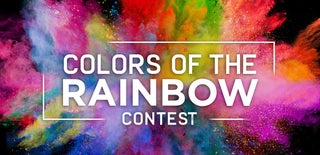Introduction: Elderberry Shrub With Ginger
The Elderberry is a fast growing bush, beloved by butterflies, which produces gorgeous, fragrant flowers in the spring. These are used around the world to make syrup and drinks, but they also add floral notes to deserts, including the latest Royal wedding cake. If you can delay gratification and leave the flowers on the bush, you will be rewarded in late summer with very dark blue berries chock full of vitamin C. The berries are popular as a folk remedy for colds and the flu (amongst other cheerful things like constipation), but really what matters is that you can use them to make this delicious and gorgeous drink.
Although the Elderberry is a shrub (i.e. a bush), "shrub" is also the word used to describe a drink popular in the colonial times, which consists of (generally) fruit macerated in sugar and vinegar (plus herbs) then diluted with water (or carbonated water) to make a beautifully refreshing beverage. This 2015 article in the New York Times, introduced me to the beverage and contains recipes to some of my favorite combination of herbs, fruit and vinegars. The following recipe is my variation on this traditional theme.
I was inspired by my desire to enter the "Rainbow" contest in the indigo category -- however, as I quickly realized, the chemical compound which gives the elderberry its deep purple shade is cyanadin -- a pigment which changes color depending on the ambient pH (as discussed in my DIY pH tester instructable). To get a good cyan, blue or purple I would have needed to replace the vinegar with baking soda or a stronger base. It would have tasted terrible and anyway, this ruby red could not be any more appealing.
Step 1: Recipe, Day 1
You only want to use ripe (dark blue, almost black) elderberries, and you also want to carefully remove the stems. Even though you will be straining the solids out later, elderberry stems contain chemicals which can be toxic -- a few stems will be OK, but it's best to remove as much as your patience allows.
Since the bush in "my" garden is relatively small, I collect the berries as they ripen, clean them, pick off the stems and then freeze them till I've collected enough to make a batch. If you can't harvest them from a bush, you may find these berries at farmers markets.
Using a fork or a potato masher (as photographed) crush together:
- 1 part elderberries (fresh or thawed)
- 1 part sugar
Put in a glass jar and leave in the fridge to macerate for 24 hours
Step 2: Recipe, Day 2
The next day, transfer your sugar and berry mix to a non-reactive pot (such as enamel) and gently simmer for about 10 minutes, occasionally stirring with a wooden spoon. (note: if you are making shrub with different berries or fruit you can skip this step, but elderberries must always be cooked!)
Remove from heat, allow it to cool a bit then add:
- 1.5 parts apple vinegar
fresh ginger, peeled and sliced thin (about 1 tablespoon per cup of elderberries)
Transfer back into a glass jar, preferably with a plastic lid, and place in the refrigerator for 1-2 weeks. Shake it every once in a while. This seems like a long time but it allows the flavors to really develop. You won't regret it.
Step 3: Recipe, Day 15
Strain your liquid and sample it at a ratio of approximately 1 part concentrate, 6 parts carbonated water -- or to taste.
The concentrate should keep in the fridge for several weeks, probably months -- but I've never been able to save it that long!

Participated in the
Colors of the Rainbow Contest













